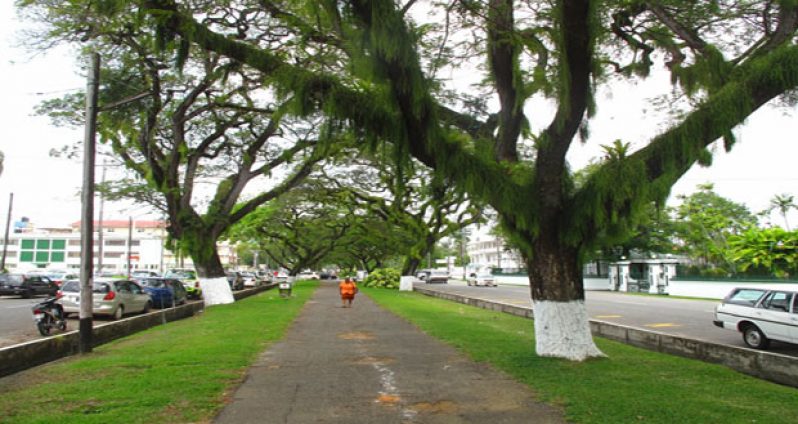NOW that the Central Government and the town councils, including Georgetown have shown some commitment and enthusiasm for clearing the accumulations of garbage and improving drainage, it is apposite that they devote some attention to the beautification, the aesthetics of the towns.
As part of the clean-up programme, it would cost little or no money. And the template for City beautification could be found in the work of the Georgetown Town Councils in the 19th and early 20th centuries.
In this programme of beautification, we shall focus on two aspects – the trees and bridges – and will concentrate on Georgetown since the City could be used as an example to others.
For decades now, no one paid any attention to the trees in the City. They were either cut down or died without replacement. And those which have survived need to be trimmed and above all, cleared of the parasites such as bird-vine which infest them. If the trees are trimmed and cleared of the parasites, the aesthetics of the City would immediately improve.
More fundamentally, there should be a systematic replanting of the trees in the City on the basis of horticultural advice. In the past, Georgetown was famous as the ‘Garden City’ of the West Indies and this was largely because of the varied and colourful trees grown in the City. Almost every street and canal was tree-lined and the trees were expertly mixed.
For example, Broad Street from Saffon Street to St Stephen Street was once lined with cabbage palms. Or upper Brickdam was lined with cannon-ball trees, or Camp Street with flamboyants, Main Street with samaans and upper Hadfield Street with mora trees. The canals were lined mostly with flowering trees such as frangipanni, golden showers or flamboyants. The trees also had a utilitarian role: they provided fire-breaks in our wooden City, those along the canals consolidated the banks with their roots so controlling slippage and silting up, and the bigger trees such as samaan absorbed a great deal of water and helped in flood control. The trees were all labelled with their common and botanical names.
In resuscitating the ‘Garden City’, however, planners have to take into account that, today, there are thousands of motor vehicles hunting for parking spaces each day and many parapet spaces need to be kept clear in the busy streets.
Georgetown once boasted of many ornate metal bridges over the canals as, for example, those in the Avenue of the Republic (High Street) or those linking Croal Street to South Road. Most of these fine and unique bridges were destroyed by thieving vandals who sold the metal to scrap iron dealers. So far, there has never been any police prosecutions of either the thieves or the scrap iron dealers. Repairs to bridges have been ad hoc and do not enhance the beauty of the City. Bridges must be expertly designed for both strength and beauty.
Georgetown and all other Guyanese towns could be transformed into places of beauty enhancing the quality of life once there is the will on the part of the leaders to achieve it.
By Pat Dial



.jpg)








